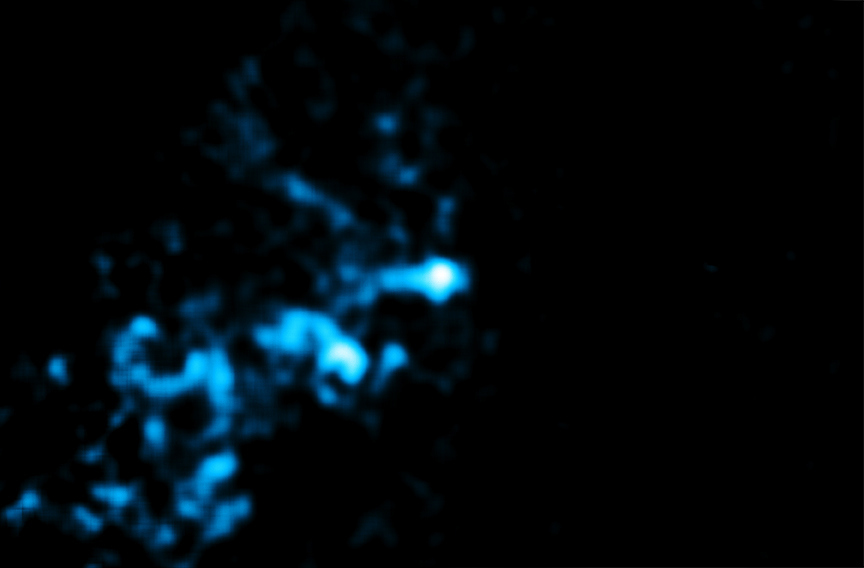
 Credit: NASA/CXC/APC/Universite Paris Diderot/M.Clavel et al.
Credit: NASA/CXC/APC/Universite Paris Diderot/M.Clavel et al.
Echoes of a Monster's Roar
Our galaxy's central, supermassive black hole, Sgr A*, is a rather modest monster. Unlike some supermassive black holes, which can weigh in at billions of times the mass of the sun, Sgr A* tips the scales at "only" 4 million solar masses (one of the lowest masses, if not the lowest mass, of the identified "supermassive" black holes). Black holes can accrete gas, dust, stars, planets and other cosmic stuff from their surroundings, and as they do their mass increases. The low mass of Sgr A* indicates that it hasn't been actively feasting on cosmic matter for most of its life. But sometimes it binges. And when it swallows something big, the accreted material, torn apart and swirling inward, gets heated to such extreme temperatures that it glows brightly in X-rays. This burst of X-radiation travels outward through space, and may (years or centuries later) collide with a cold cloud, causing iron atoms in the cloud to fluoresce in X-rays. This fluorescent X-ray emission provides a tell-tale clue that something violent happened somewhere (relatively) close by. The image above is a snapshot from a study by the Chandra X-ray observatory of cold clouds in the Galactic center near Sgr A* which suddenly brightened in X-rays, presumably due to an outburst from Sgr A*. The X-ray "light echoes" from Sgr A* indicates the past pattern of the black hole's mealtimes, and helps astronomers understand how such supermassive black holes eat and grow.
Published: November 18, 2013
<
HEA Dictionary ● Archive
● Search HEAPOW
● Other Languages
● HEAPOW on Facebook
● Download all Images
● Education ● HEAD
>

Each week the HEASARC
brings you new, exciting and beautiful images from X-ray and Gamma ray
astronomy. Check back each week and be sure to check out the HEAPOW archive!
Page Author: Dr. Michael F. Corcoran
Last modified Monday, 26-Feb-2024 17:23:47 EST


